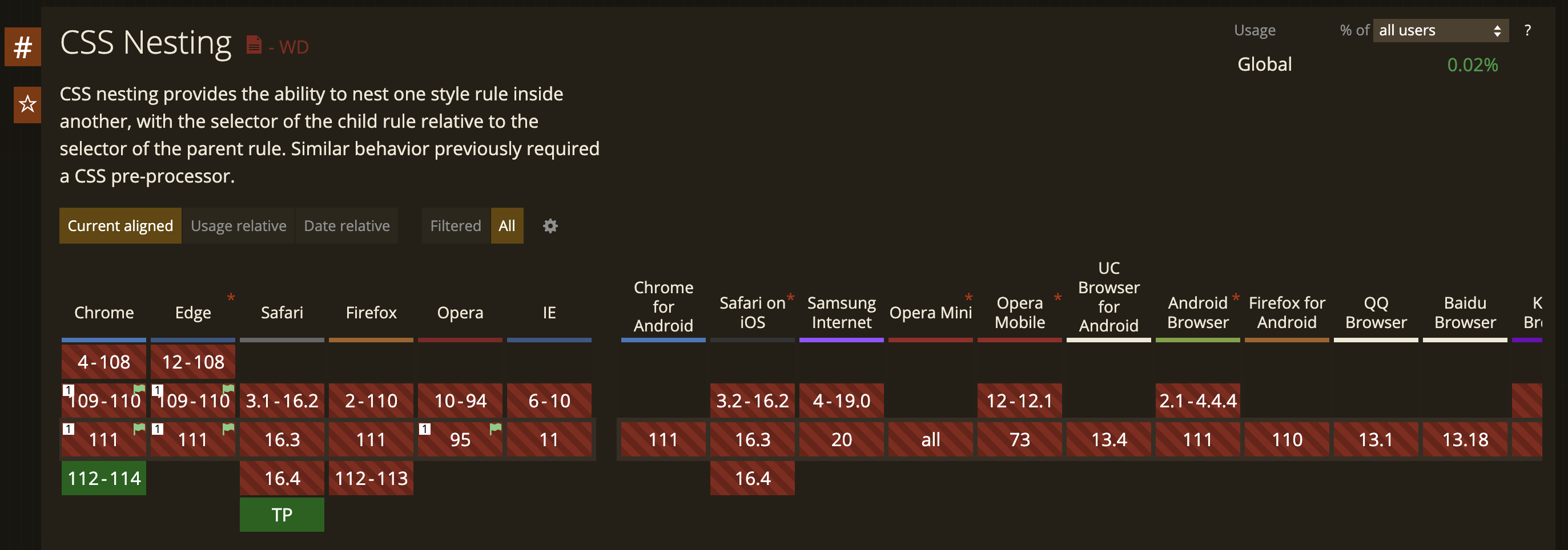Introduction
Cascading Style Sheets (CSS) is a powerful tool used for styling and formatting web pages. However, when working with large, complex websites, CSS can quickly become cumbersome and difficult to manage. This is where CSS nesting comes in – a powerful feature that allows you to simplify your stylesheets and improve code readability. W3c (World Wide Web Consortium) introduced the CSS nesting feature in September 2019 to simplify the way we apply styles to our applications and websites.
What is CSS Nesting?
CSS Nesting is a way to group related CSS rules and selectors together in a hierarchical structure. It allows you to target nested HTML elements without having to write complex selectors or duplicate code. This makes it easier to understand and maintain your stylesheets, as well as reduces the amount of code you need to write.
To understand how nesting works, consider the following HTML code:
<div class="parent">
<h1 class="child">Heading 1</h1>
<p class="child">Paragraph 1</p>
<p class="child">Paragraph 2</p>
</div>
To style this HTML code with CSS, you could write the following code:
.parent {
background-color: #f2f2f2;
padding: 20px;
}
.parent .child {
color: #333;
font-size: 16px;
margin-bottom: 10px;
}
In this example, the .parent class is used to style the outer div element, while the .child class is used to style the nested h1 and p elements. By using CSS nesting, you can easily target the nested elements without having to write separate rules for each one.
How to use CSS Nesting?
CSS Nesting is supported by the latest versions of modern web browsers, including Chrome and Safari. To use CSS nesting, you simply need to nest selectors inside each other, like this:
.parent {
background-color: #f2f2f2;
padding: 20px;
.child {
color: #333;
font-size: 16px;
margin-bottom: 10px;
}
}
In this example, the .child class is nested inside the .parent class. This means that any HTML element with the class child that is a descendant of an element with the class parent will be styled according to the rules defined in the nested selector.
CSS nesting can also be used with pseudo-classes and pseudo-elements, like this:
.parent {
background-color: #f2f2f2;
padding: 20px;
&:hover {
background-color: #ccc;
}
&::after {
content: "Nested content";
}
}
In this example, the :hover pseudo-class is nested inside the .parent class, which means that the background color will change when the user hovers over the element. The ::after pseudo-element is also nested inside the .parent class, and adds content to the end of the element.
Benefits of CSS Nesting
CSS Nesting offers several benefits that can help simplify and streamline your stylesheet:
- Improved code readability: CSS nesting allows you to group related styles together, making it easier to read and understand your code.
- Reduced code duplication: By using CSS nesting, you can avoid writing duplicate code for nested elements, which can help reduce the overall size of your stylesheet.
- Simplified maintenance: Nesting makes it easier to make changes to your stylesheet, as you only need to update one rule instead of multiple rules for each nested element.
Compatibility

You can check the detailed compatibility here
Conclusion
CSS Nesting is a powerful feature that can help simplify and streamline your stylesheets. By using nesting. You can also read more posts on Frontend Development here.